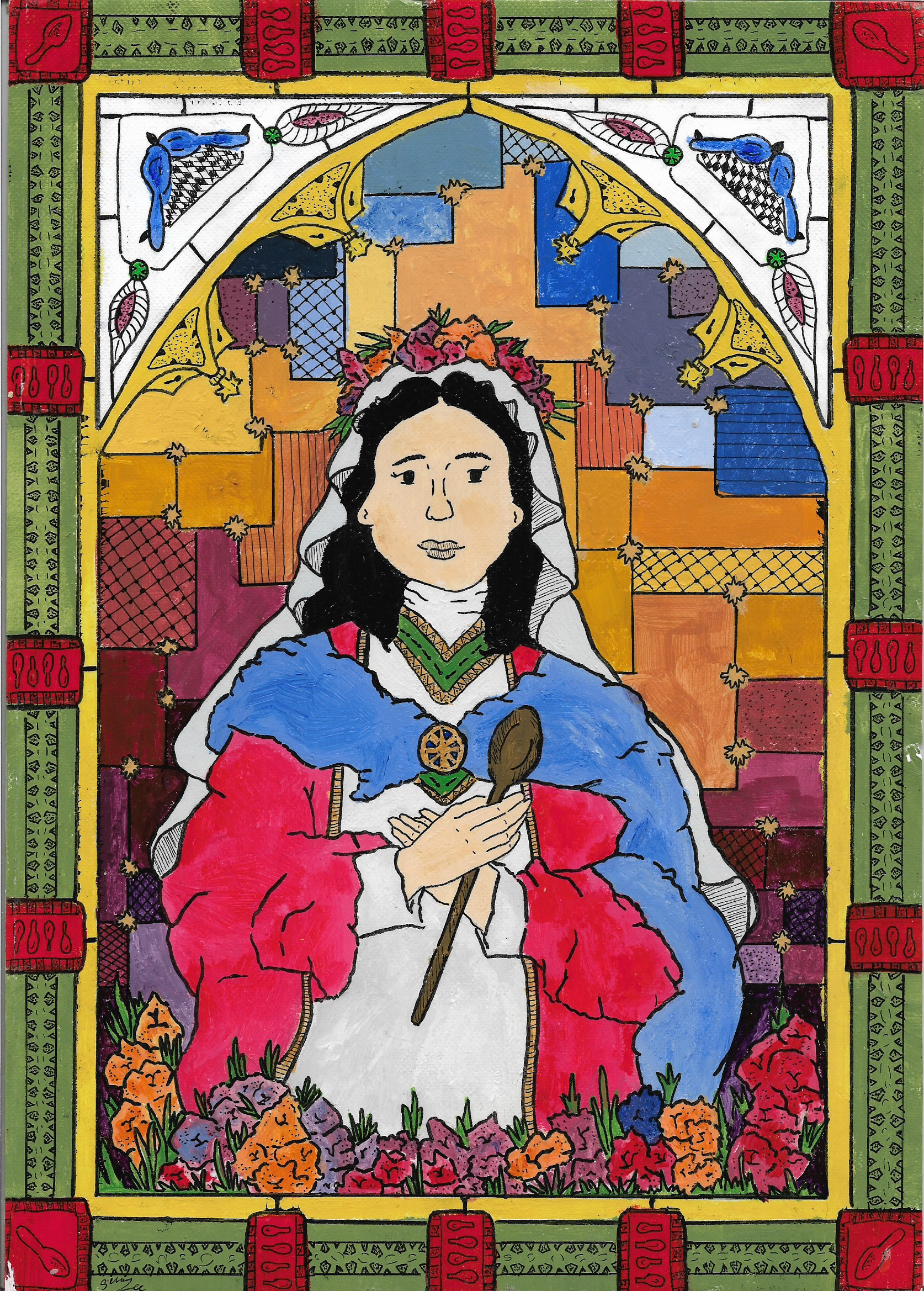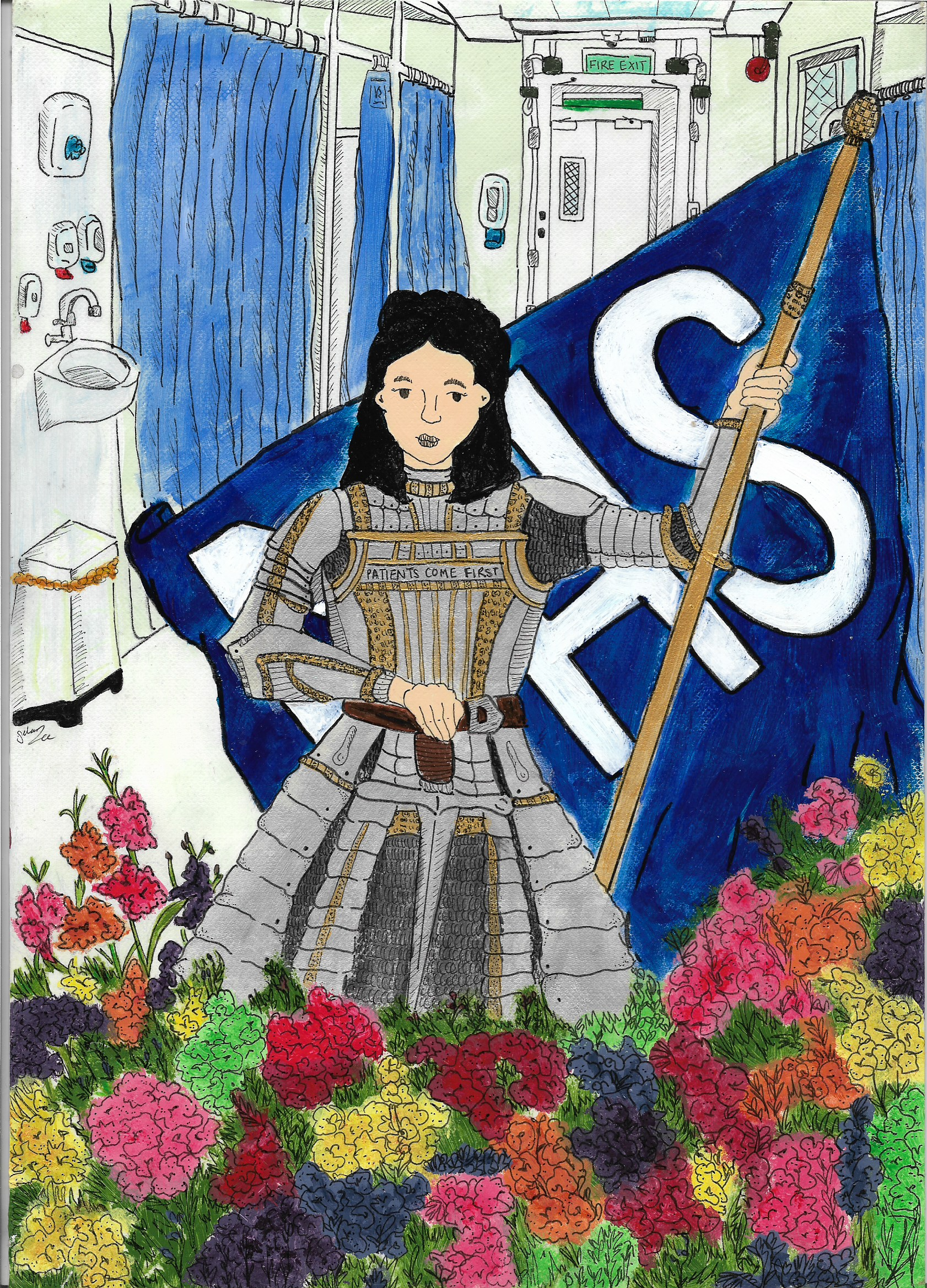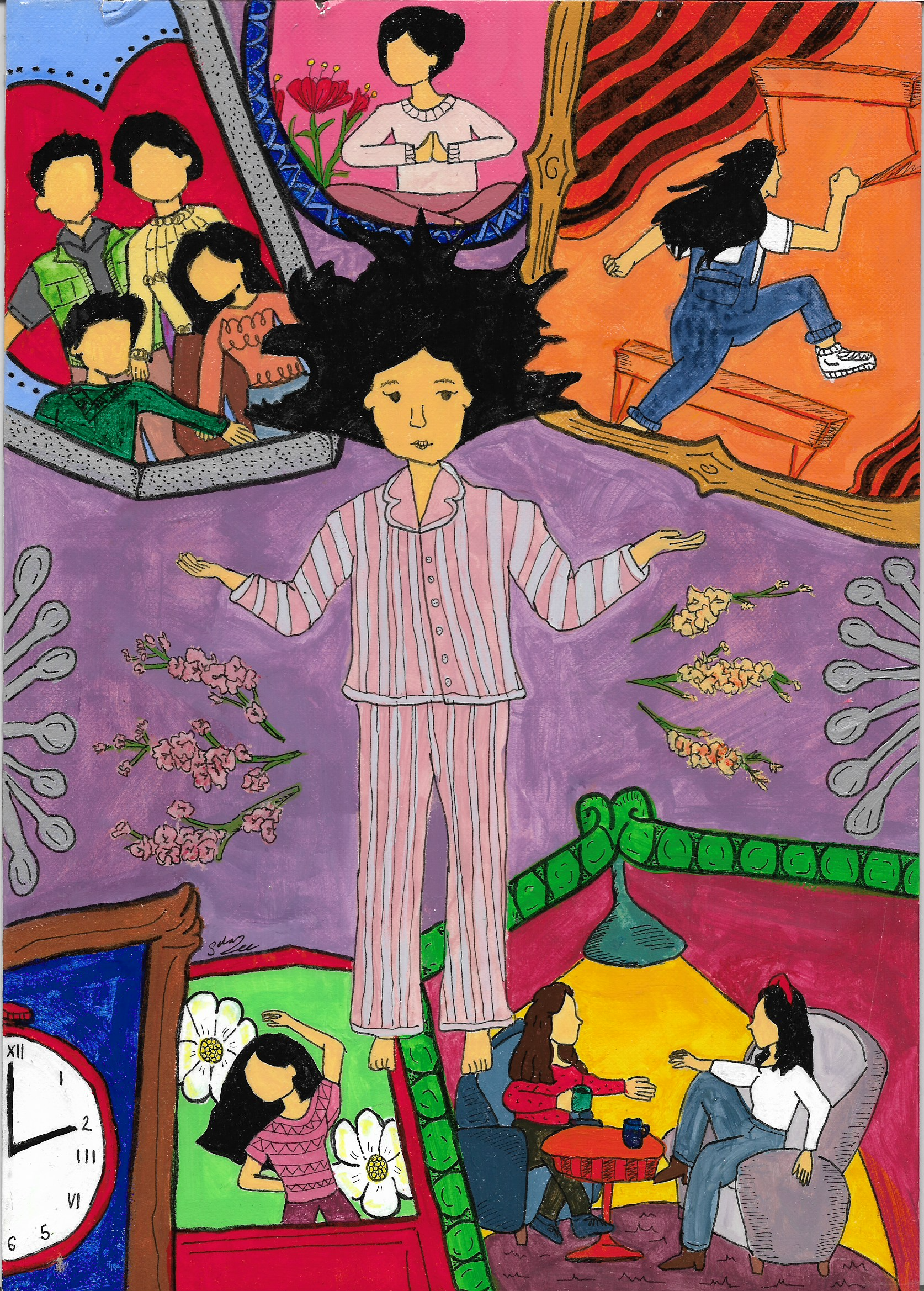“I think but dare not speak.” - The hidden misconceptions of chronic illness
By Selan Lee from the United Kingdom
I interned in the Perspectives Programme at Kaleidoscope Health and Care during my placement year. During this internship, I designed and managed client events and workshops, created weekly progress reports, and learned about healthcare systems and policy (in the UK, at least). But most importantly, I designed, curated and hosted an art exhibition celebrating intersectionality in chronic illness entitled ‘Low on Spoons, Not Identity’. Among the fabulous photography, fantastic comic illustration and fanciful jewellery pieces on display was a set of 3 (very amateur) A4 panels by me. Entitled “I am not…” each panel addressed a misconception often thought of but not spoken about chronic illness (some of which many in the chronic illness community still believe or are associated with by society, our loved ones or even ourselves.)
The first panel focused on the sainthood or idolisation of the chronically ill. Now, it may seem strange to find inspiration or guidance from someone who is often house- or hospital-bound and barely has enough energy to perform miracles - but the sick have been canonised as martyrs or lauded as idols for years. For example, fictional characters such as Tiny Tim in A Christmas Carol and Beth in Little Women are seen to be too good for this world. Katie Hogben remarks in her exhibition ‘Breaking Apart the Sick Girl Trope’ - that Beth is a “happy flower girl… Her amenable nature never falters, even in her long-term suffering and eventual death.”[1] In modern times, the misconception prevails - so much of the media surrounding chronic illness showcases a beautiful, rose-tinted, inspirational view of life with an often draining and limiting condition. The only way you can tell Hazel in The Fault in Our Stars has cancer is because she has a nasal cannula and an oxygen tank with her—no sign of fatigue, weight loss or steroid-induced moon face. Our social media is also filled with inspirational chronic illness stories and comments praising our ‘bravery’. I’ve received comments which praise ‘my dedication’ for studying during my infusions when really there’s no choice otherwise.
Such aesthetically pleasing and morally affirming portrayals of chronic illness omit the less beautiful aspects of chronic illness. Consequently, this omits many realities and negates the ability of people with long-term conditions to voice the negativity in their situation. The misconception of being akin to a saint may be desired, but it enforces toxic positivity on the chronically ill - the individual must maintain a positive attitude and minimise their struggles; their lives are not validated if they do not meet this ideal. I, too, play my part in perpetuating this image. I have made social media posts highlighting my achievements since my diagnosis, but rarely do I post about the days I shut myself away in my room when I’m too exhausted. I don’t tell friends about the time I cried about my situation in an accessible toilet in a train station, but rather about the perks of having a RADAR key. Many of us fear isolation and lack of empathy by sharing the ugly side of chronic illness. Still, by continuing this misconception, we are abetting it, and its existence will remain ingrained in its stained glass iconography - distorting our authentic lives.
The second panel confronted the depiction of journeys in chronic illness as a ‘battle’ and the chronically ill individual as a ‘warrior’. I’m sure many people with chronic illness have encountered button badges, hoodies and posters emblazoned with the phrase ‘chronic illness warrior’. Or you probably have seen quotes that link your day-to-day existence with chronic illness as a ‘fight’ or ‘daily battle’, and by living, you are ‘winning’ or ‘not backing down’. These phrases can be supportive, but only temporarily. Chronic illness is something you can never win - hence the use of chronic. Being a warrior means you are courageous, like Joan of Arc (a figure I drew inspiration from in the panel), but I don’t think I am. None of my choices in my health journey are necessarily brave. I chose to self-inject my second biologic because the first stopped working, and I wanted to reduce the time spent in the hospital. I had surgery for my fistula because the pain was unbearable. None of these actions fit the definition of brave. The Cambridge Dictionary defines bravery as “showing no fear of dangerous or difficult things”.[2] I dealt with my dangerous or difficult things, the risk of a flare, anaphylaxis and infection, with plenty of fear. To live my life to its fullest possible extent, I have to accept hard-to-swallow realities and understand that when my life is on the line - I have no choice otherwise. Realising you have no choice is terrifying, but it is equally terrifying knowing the word brave is used here as a stand-in for ‘I’m glad it’s not me’. You’re right - you should be glad it’s not you, but like with the inspiration misconception, the use of ‘warrior’ and ‘courageous’ minimises our lives and makes our entire existence seem pitiable. Our existence is the same as yours - human.
Finally, the last panel looked at the misconception of chronically ill people being lazy. I’m sure plenty have felt lazy and wanted to ‘rot’ away in bed for the day, but the fatigue many chronically ill people suffer from is never the same. In early 2022, the term ‘goblin mode’ began trending, and many embraced an aesthetic which encouraged unapologetic laziness and self-indulgence. However, the aesthetic, as highlighted by Hannah Turner, ignores how much of the disabled and chronic illness community “embody goblin mode because there is often no choice not to”.[3] When you have low energy, you don’t want to expend the few spoons you have to change clothes or wash your hair. You use them to feed yourself or conserve that energy.
Moreover, laziness has connotations of purposeful slovenliness. I doubt anyone wants to be restricted to their homes while their friends go out or we miss out on cultural experiences. I missed my first concert, didn’t get to spend the last few months of high school with my friends, and had to cancel at the last minute for so many things because of my fatigue. My ‘laziness’ is a harbinger of regret over every missed opportunity. None of this is purposeful. I do not want to be ‘lazy’, but laziness has been thrust upon me.
There are many misconceptions out there about chronic illness, and there are probably some I don’t know of. But by keeping them unspoken and allowing them to penetrate our thoughts - we are enabling their pervasive influence on how we tackle chronic illness. Letting them be spoken and discussed will allow us to change the perspective and reduce their potency - one misconception at a time.
References
Brave. (2024). https://dictionary.cambridge.org/dictionary/english/brave
Turner, H., & Sacca, P. B. B. (2022, March 21). As A Disabled Woman, The Goblin Mode Trend Doesn’t Sit Right With Me. Refinery29. https://www.refinery29.com/en-gb/goblin-mode
Welcome to Breaking Apart the Sick Girl Trope online exhibition. (2022, November 1). Breaking Apart the Sick Girl Trope. https://thesickgirltrope.wordpress.com/online-exhibition/




